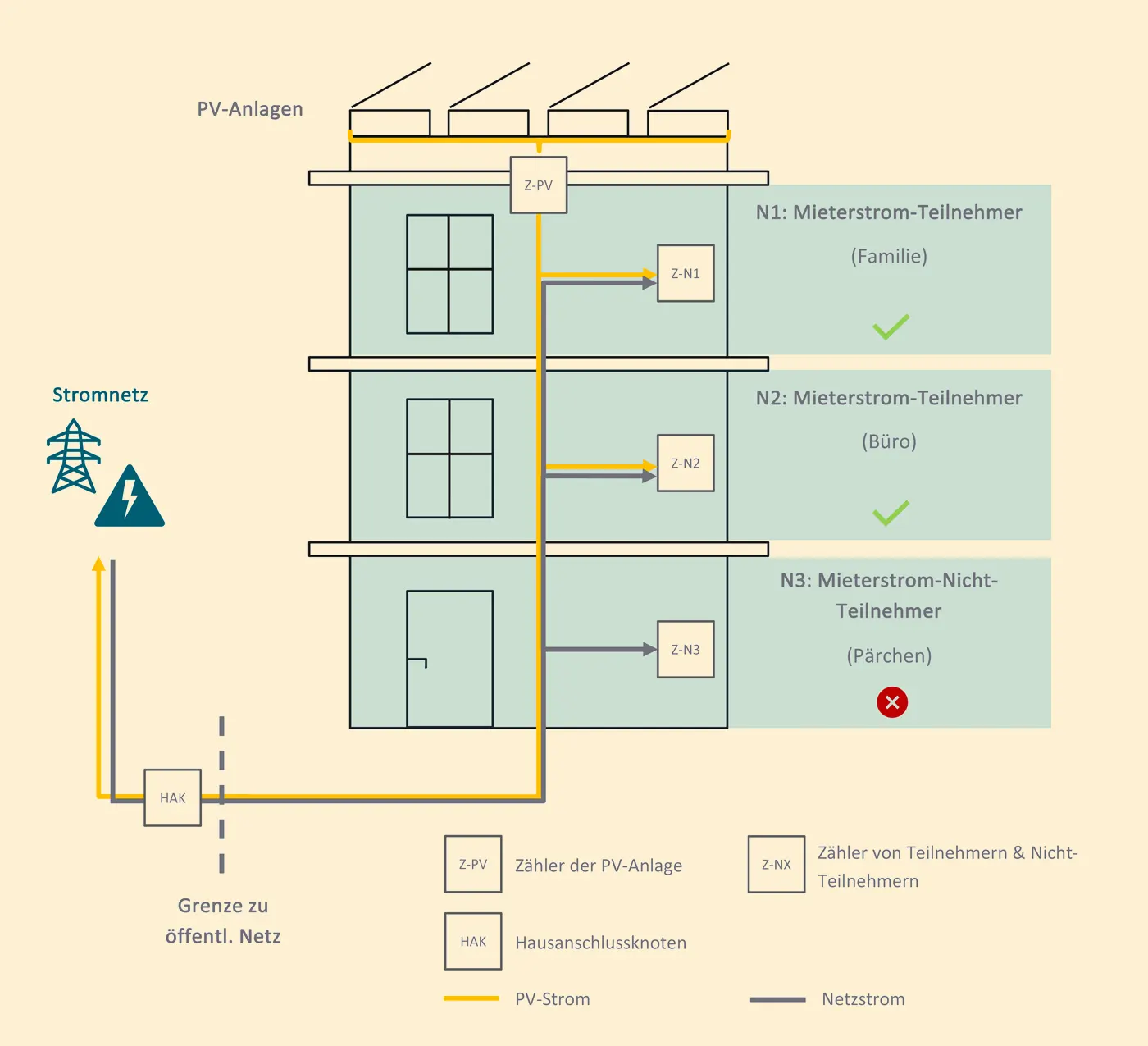Mieterstrom: Nachhaltige Energie direkt vom Dach für alle
Mieterstrom ist eine zukunftsweisende Möglichkeit, die Energiewende voranzutreiben und dabei die Stromkosten für Mieter zu senken. Dieses innovative Modell bietet sowohl Mietern als auch Vermietern zahlreiche Vorteile und bringt saubere Energie direkt in Mehrfamilienhäuser. Besonders Unternehmen wie SolarProjekt 3S unterstützen dabei, die Potenziale von Mieterstrom vollständig auszuschöpfen. Doch was genau verbirgt sich hinter dem Begriff und wie funktioniert dieses Konzept?
Was ist Mieterstrom und wie funktioniert er?
Mieterstrom beschreibt ein Energiekonzept, bei dem Strom vor Ort mithilfe einer Photovoltaikanlage produziert und direkt an die Mieter im Gebäude geliefert wird. Im Gegensatz zur herkömmlichen Energieversorgung muss der Mieterstrom nicht erst durch das öffentliche Stromnetz geleitet werden. Die erzeugte Energie wird also ohne Umwege an die Verbraucher weitergegeben.
Bei einem Mieterstromprojekt wird in der Regel eine Solaranlage auf dem Dach des Wohngebäudes installiert. Diese Solaranlage gehört entweder dem Vermieter oder wird von einem externen Dienstleister wie SolarProjekt 3S betrieben. Der erzeugte Mieterstrom wird zuerst von den Bewohnern des Gebäudes genutzt. Überschüssige Energie, die nicht sofort vor Ort verbraucht wird, wird ins öffentliche Netz eingespeist.

Die Vorteile von Mieterstrom für Mieter
Mieterstrom bietet Mietern eine Vielzahl von Vorteilen:
- Geringere Stromkosten: Mieterstrom ist meist günstiger als herkömmlicher Haushaltsstrom, da Netzgebühren und bestimmte Abgaben entfallen.
- Klimafreundliche Energie: Mit Mieterstrom setzen Mieter auf erneuerbare Energien und tragen aktiv zum Klimaschutz bei.
- Unabhängigkeit: Durch die Nutzung von lokal erzeugtem Mieterstrom sind Mieter weniger abhängig von den großen Energieversorgern und deren Preispolitik.
Warum Mieterstrom auch für Vermieter attraktiv ist
Auch Vermieter profitieren enorm von Mieterstrom. Die Installation einer Photovoltaikanlage auf dem Gebäude kann den Wert der Immobilie steigern und sorgt für ein modernes, umweltfreundliches Image. Zudem bietet die Einspeisevergütung für überschüssigen Mieterstrom eine attraktive Einnahmequelle. Mit der Unterstützung durch erfahrene Partner wie SolarProjekt 3S wird die Umsetzung solcher Projekte besonders einfach.
Rechtliche Rahmenbedingungen für Mieterstrom
Das Mieterstrommodell ist durch das Mieterstromgesetz geregelt. Dieses Gesetz verpflichtet Anbieter dazu, den Mieterstrom günstiger anzubieten als den regionalen Grundversorgungstarif. Zudem wird der nicht verbrauchte Strom, der ins öffentliche Netz eingespeist wird, vergütet. SolarProjekt 3S begleitet Vermieter bei der Einhaltung aller gesetzlichen Anforderungen und hilft dabei, Mieterstromprojekte erfolgreich zu realisieren.


Mieterstrom als Teil der Energiewende
Mieterstrom ist ein wichtiger Bestandteil der Energiewende in Deutschland. Gerade in Städten mit hohem Anteil an Mietwohnungen ist Mieterstrom eine ideale Lösung, um mehr Menschen den Zugang zu erneuerbaren Energien zu ermöglichen. Durch Mieterstrom können Mieter ohne eigenes Dach von Solarstrom profitieren und gleichzeitig etwas für den Klimaschutz tun.
SolarProjekt 3S hat sich auf die Planung und Umsetzung solcher Projekte spezialisiert. Auf ihrer Website zeigen sie, wie einfach Mieterstrom umgesetzt werden kann. Von der Installation der Solaranlagen bis zur Abrechnung des Stroms bietet SolarProjekt 3S eine umfassende Unterstützung – für Vermieter und Mieter gleichermaßen.
Mit Mieterstrom wird nicht nur die Umwelt geschont, sondern auch eine nachhaltige, kostengünstige Energieversorgung für alle Beteiligten geschaffen. Dieses Modell ist ein Gewinn für die Energiewende, für Mieter und Vermieter gleichermaßen.